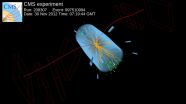Sepsis is a whole-body inflammation syndrome set off when the immune system wildly overreacts to the presence of infectious pathogens. It is the leading cause of hospital deaths in the United States, accounting for nearly half of the total number, and is tied to the early deaths of at least 750,000 Americans each year. Its estimated annual cost to the health-care system exceeds $24 billion.
The great majority of sepsis cases are caused by bacterial rather than viral infections and are best treated with antibiotics. But antibiotics are unhelpful -- and can be counterproductive -- when a patient has an outwardly similar but infection-free syndrome called sterile inflammation, an intense, systemic inflammatory response to traumatic injuries, surgery, blood clots or other noninfectious causes.
"It's critical for clinicians to diagnose sepsis accurately and quickly, because the risk of death from this condition increases with every passing hour it goes untreated," said Purvesh Khatri, PhD, assistant professor of biomedical informatics research.
Sepsis or sterile inflammation?
In practice, distinguishing sepsis from sterile inflammation is a toss-up. Right now, the only diagnostics that can help do this are too slow or too inaccurate, or both, Khatri said. As a result, hospital clinicians are pressured to treat anybody showing signs of systemic inflammation with antibiotics. That can encourage bacterial drug resistance and, by killing off harmless bacteria in the gut, lead to colonization by pathogenic bacteria, such as Clostridium difficile.
The inability to easily distinguish sepsis from sterile inflammation makes it tough for pharmaceutical companies to conduct clinical trials of drugs aimed at treating sepsis; patients may be mistakenly assumed to have sepsis when they in fact have sterile inflammation, and vice versa, Khatri said.
"We think we've got the makings of a diagnostic blood test that will allow clinicians to distinguish between these two types of inflammation," he said.
Khatri is the senior author of a new study, to be published May 13 in Science Translational Medicine, in which a meta-analysis of publicly available data sets allowed him and his associates to tease out a gene-activation pattern that distinguishes septic from sterile systemic inflammation.
"We thought there might be some genes that the body turns on specifically in response to infection, and after sifting through a huge amount of data we found them," said lead author Timothy Sweeney, MD, PhD, a postdoctoral scholar now doing a residency in general surgery at Stanford.
Numerous studies have been conducted to find differences in the activation levels of immune-response genes between infection-related inflammation and sterile inflammation. But these studies have yielded conflicting or murky results. One big reason is that both infection and noninfectious tissue trauma activate many of the same immune-system components and pathways. At the gene-activation level, the overlap is staggering: More than 80 percent of a person's roughly 25,000 genes change their activity levels substantially, and mostly in the same direction, in response to massive inflammation, whether due to sepsis or sterile causes. That overlap obscures any easily detectable changes attributable solely to infection.
Needle in a haystack
Further confounding attempts to identify patterns of increases or decreases in gene activity is that fact that some patients are already experiencing sepsis when they're admitted to the hospital, while others become infected during their hospital stay. So two different sepsis patients admitted at the same time may be at very different stages of a complex inflammation process.
"How do you figure out which tiny fraction of those changes was caused by infection? You're looking for a needle in a haystack," Khatri said.
The needle, it turns out, consists of a signature formed by consistent changes in the activity levels of a mere 11 genes amid the chaotic background of the other 20,000-plus genes whose activity levels fluctuate markedly over the course of systemic inflammation and recovery.
The Stanford sleuths analyzed a number of publicly available data sets containing results of studies that had assessed activity levels for the entire human genome in sepsis cases, as well as in cases of sterile inflammation. In all, they looked at more than 2,900 blood samples from nearly 1,600 patients in 27 different data sets containing medical information on diverse patient groups -- men and women, young and old, suffering from sterile inflammation or sepsis, including patients who already had sepsis when first admitted to the hospital as well as patients who were diagnosed with it later -- in addition to healthy control subjects.
The analysis consisted of two separate steps. First, the researchers scoured nine data sets containing more than 650 patient samples. They looked for genes whose activity uniformly and substantially increased or decreased, across all nine data sets, in patients within 24 hours of a sepsis diagnosis compared with genes from those not diagnosed with sepsis.
Initially, whatever signal may have been hiding in this group of samples was buried in the surrounding noise of myriad irrelevant gene-activity fluctuations. But the cacophony ceased when the scientists adjusted their analytical approach by taking into account when the patient was injured or operated on. That way, the researchers could account for the changes, following a surgery or injury, in inflammation-related gene activity over time, independent of the presence or absence of infection. Blood samples were therefore time-matched according to how soon a blood sample was drawn after the initial injury or surgery.
After this adjustment, 11 genes jumped out of the haystack as likely sepsis markers. The researchers confirmed this 11-gene signature in an additional 18 cohorts comprising more than 1,800 patient samples.
"We were able to identify a slight bump in activity of these 11 genes in patients two to five days prior to their clinical diagnosis," said Khatri. That could mean getting an earlier diagnosis than can be achieved with current approaches, which is key considering the rapid rate at which sepsis mortality rises once it gets a foothold.
The gene-activation signature showed a sepsis-detecting accuracy surpassing that of methods now in use, Sweeney said. Combining the new technique with other current diagnostic methods is likely to be more accurate than using any one alone, he added.
INFORMATION:
Stanford's Office of Technology Licensing has filed a patent on the intellectual property associated with these findings.
Undergraduate student Aaditya Shidham is another Stanford co-author of the study.
The study was funded by the Stanford Department of Surgery and by the National Library of Medicine (grant 2T15LM007033) and the National Institute of Allergy and Infectious Diseases (grants 1U19AI109662 and U19AI057229).
Information about Stanford's Department of Medicine, which also supported the work, is available at http:// http://medicine.stanford.edu/.
The Stanford University School of Medicine consistently ranks among the nation's top medical schools, integrating research, medical education, patient care and community service. For more news about the school, please visit http://med.stanford.edu/school.html. The medical school is part of Stanford Medicine, which includes Stanford Health Care and Lucile Packard Children's Hospital Stanford. For information about all three, please visit http://med.stanford.edu.




